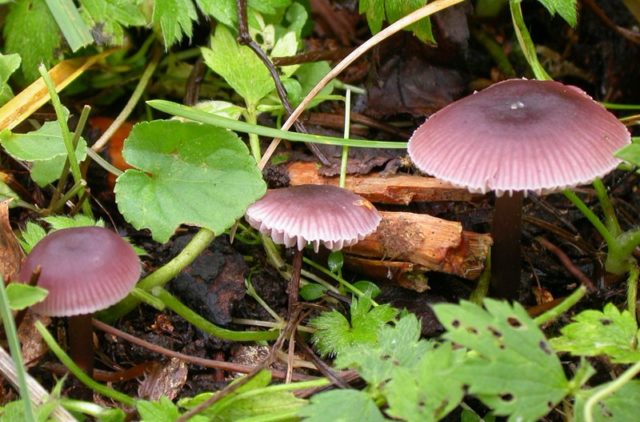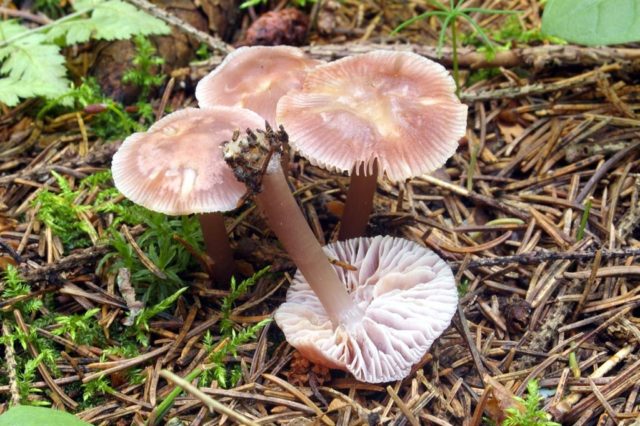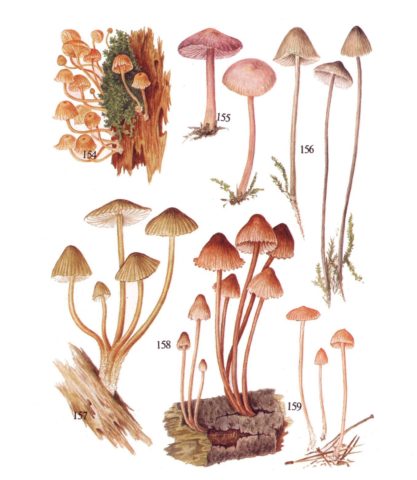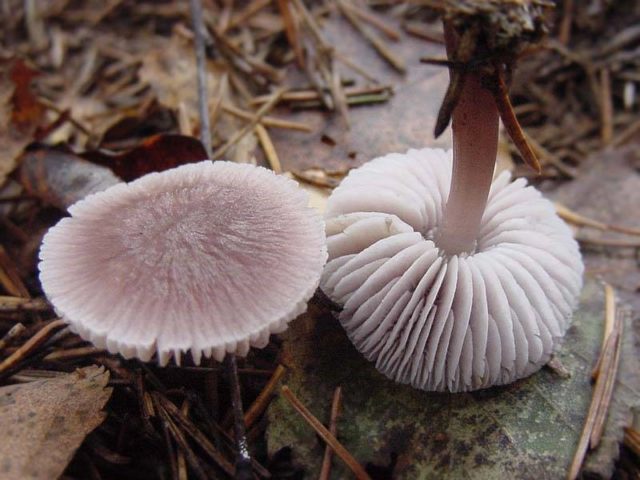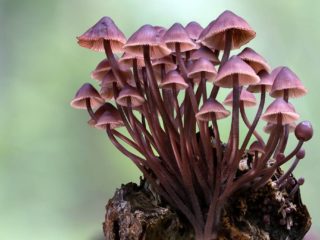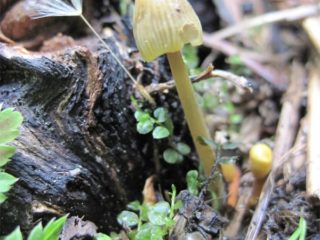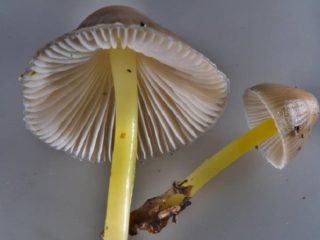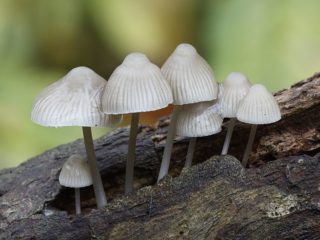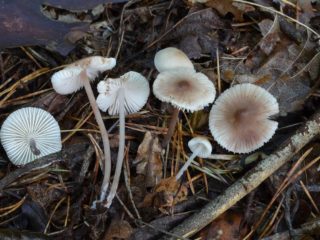Content
Mycena pura is a rare saprophora mushroom of the Mycena family. It is considered hallucinogenic because it contains the toxin muscarine. The growing area of mushrooms is quite wide. Representatives of the genus can be found all over the world, from the Southern Hemisphere to the Northern latitudes. They grow both on flat terrain and in the mountains.
What do clean mycenae look like?
Mycena pure is characterized by its small size. The size of the cap is no more than 2-5 cm. At the beginning of growth, it resembles a hemisphere, later it takes on a blunt bell-shaped or wide-conical shape. Over time, the cap becomes spread out, but with a convex center. Its flesh is thin, with small hairs along the edge. The color of the cap can be varied - white, pink, bluish-gray, light purple, lilac.
The mycena stalk is clean, smooth, slightly thickened towards the base. Length – 4-8 cm, thickness 0.2-0.8 cm. The leg is smooth, hollow, sometimes slightly twisted, slightly lighter than the cap, especially in the upper part. The pulp of the mushroom is quite watery, with a characteristic alkaline odor. The plates fused with the stalk are wide and sparsely located. Their color is quite light, ranging from white to pink.
Where do pure mycenae grow?
Mycena pure grows in Europe, South-West Asia and America. It grows mainly in small groups in coniferous and deciduous litter, consisting of fallen leaves, needles, branches, twigs, fruits and bark. Pure mycena is also found among dead wood of hardwood. Occasionally it can grow on mossy spruce trunks. Mushrooms like rich soil, but can also bear fruit in poor soil. The period of intensive growth of pure mycena is the beginning of spring and mid-summer. Occasionally fruiting is observed in the autumn.
Is it possible to eat pure mycenae?
Eating pure mycena is strictly prohibited. Muscari-like alkaloids contained in the composition make it poisonous and, therefore, dangerous to health. Also, pure mycenae are hallucinogenic mushrooms, since they contain psychotropic substances of the indole group. Mushrooms have a rather unpleasant and repulsive odor, making them unsuitable for consumption.
Symptoms of poisoning
The pulp of pure mycena contains muscarine, which causes contraction of muscle tissue, in particular, the stomach, spleen, bladder, and uterus. It also provokes increased secretion of gastric juice and bile. The pupils constrict and salivation increases.
Symptoms of pure mycena poisoning develop very quickly. The first signs can be noticed within 30 minutes.
The main symptoms of poisoning are:
- diarrhea;
- nausea;
- vomit;
- dizziness;
- overexcitement;
- need for physical activity;
- state of alcoholic intoxication;
- convulsions;
- shiver;
- rapid pulse and heartbeat;
- breathing problems;
- decrease in body temperature.
The body's recovery during recovery is too slow, and the blood clots very poorly.
Toxic substances found in mushrooms cause auditory and visual hallucinations. Changes in visual and sound perception are manifested by the following symptoms:
- speech changes;
- increased sensitivity to voices and sounds;
- music is heard differently;
- surrounding objects begin to move;
- colors are distorted.
First aid for poisoning
Providing first aid for pure mycena poisoning involves the following procedures:
- Washing the intestines and stomach using an enema and emetics. The victim should be given a warm soda or manganese solution to drink. The amount of liquid should be quite large.Then you need to press on the root of the tongue, thereby causing a gag reflex.
- Take activated carbon dissolved in water at the rate of 1 tablet per 10 kg of body weight.
- Consuming large amounts of castor oil.
- Subcutaneous administration of atropine, which is an antidote to muscarine. The manipulation must be carried out in a medical institution, in a hospital setting.
Conclusion
Mycena pure is a poisonous hallucinogen mushroom, quite often found in forests. It contains very dangerous substances that not only distort the surrounding reality, but also pose a serious threat to human health and even life. You can avoid negative consequences by providing the poisoned person with timely and correct first aid.
